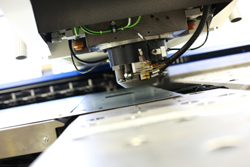Finite element contact and friction analysis
Finite element analysis is a well known and widely used computer simulation method used in engineering analysis. Many engineering problems, like friction between two surfaces in contact, are expressed with analytically unsolvable equations. Moreover, not only are the resulting equations partially differential but also involve parameters that need to be empirically or experimentally determined. Friction coefficient is one such example. Despite the numerous industrial applications of finite element technology, its usage within the various industrial sectors varies considerably. In order to facilitate exchange of knowledge and experience between these sectors, the European Commission has funded the FENET thematic network. The network focused on the technology areas of durability and life extension, multi-physics and new technologies and finally, product and system optimisation. With over 120 organisations as members, the network represents eight industrial sectors in total like aerospace, civil construction, bio-medical and consumer goods. The FENET project has conducted the largest ever independent international survey on the use of finite element technology, with over 1,300 responses. Additionally, network members met annually in order to promote best practices and address the difficulties experienced by finite element users. Within the FENET network, a small working group has specifically addressed contact modelling problems and limitations of available finite element software. It has also looked for new ways to expand further the application of finite element methods. The FENET working group has established a new and advanced set of benchmark contacts, namely two dimensional contact of cylindrical roller, three dimensional punch, sheet metal forming, loaded pin and steel roller on rubber. The work group has published a contact benchmarks report that can be found at: http://www.fe-net.org/







